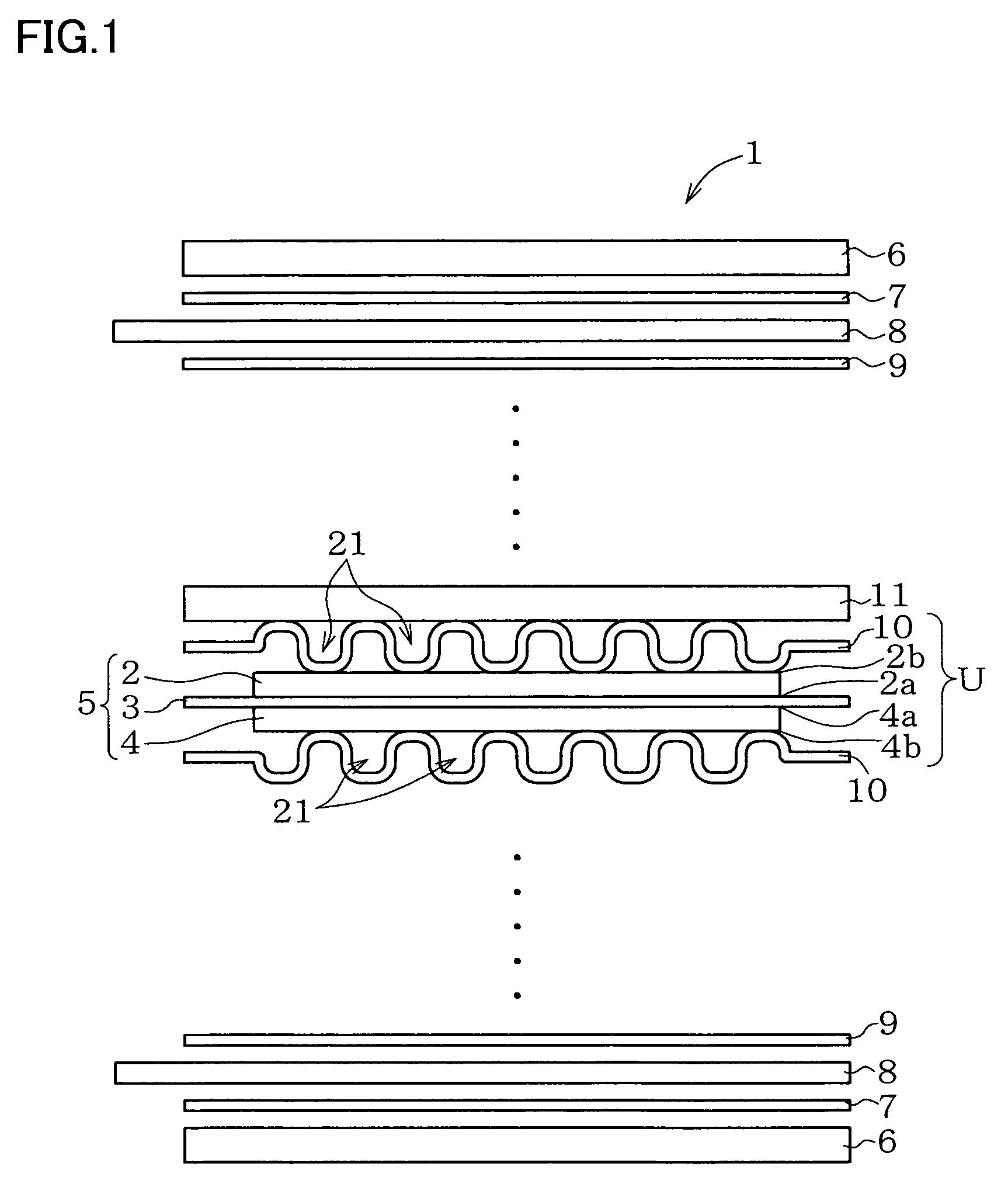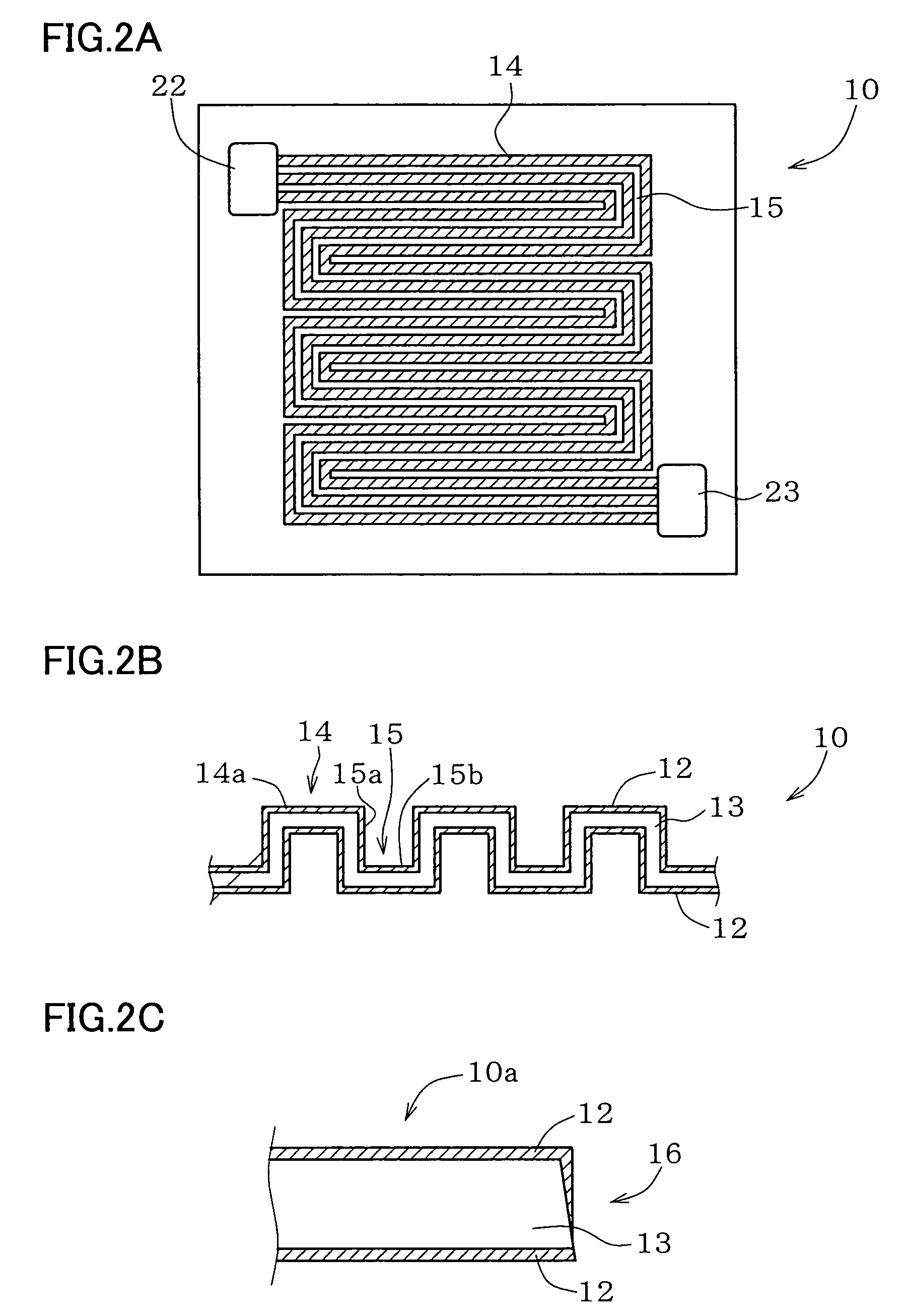Metal component for fuel cell and method of manufacturing the same, austenitic stainless steel for polymer electrolyte fuel cell and metal component for fuel cell material and method of manufacturing the same, corrosion-resistant conductive component and method of manufacturing the same, and fuel cell
a technology of austenitic stainless steel and fuel cells, which is applied in the direction of cell components, final product manufacturing, sustainable manufacturing/processing, etc., can solve the problems of undesired exposure in certain parts, and achieve excellent corrosion resistance, suppress surface roughness, and excellent corrosion resistance
- Summary
- Abstract
- Description
- Claims
- Application Information
AI Technical Summary
Benefits of technology
Problems solved by technology
Method used
Image
Examples
example 1
[0165]The second inventive examples and comparative example Steels (SUS304-base) having compositions shown in Table 3 below were melted and forged to thereby prepare ingots, and the ingots were further forged and rolled to thereby manufacture steel plates of 0.2 mm thick. The steel plates were then subjected to solution treatment at 1,100° C., and punched to produce 50×40 mm test pieces for the corrosion test. The test pieces were then subjected to the corrosion test by the procedures described below. Results are shown in Table 3. In the corrosion test, the above-described test piece was kept as being dipped in 0.4 liter (L) of a 0.1 wt % sulfuric acid solution (approximately pH2) boiled under reflux for 168 hours, and metal ions eluted into the solution was analyzed by atomic absorption spectrometry, and amount thereof was expressed in weight per 0.4 liter (L) of the solution.
[0166]
TABLE 3Amount of ion elutionComposition (wt %)(mg / 0.4 liter)Judg-No.CSiMnPSCuNiCrMo*NNbA**FeCrNiCuMom...
example 2
[0169]The second inventive examples and comparative example steels (SUSXM7-base) having compositions shown in Table 4 below were processed similarly to as described in Example 1, to thereby manufacture 50×40 mm sample steel plates for corrosion-resistant of 0.2 mm thick. The test pieces were then subjected to the corrosion test by the procedures described in the above. Results are shown in Table 4.
[0170]
TABLE 4Amount of ion elutionComposition (wt %)(mg / 0.4 liter)Judg-No.CSiMnPSCuNiCrMo*NTiA**FeCrNiCuMomentInventive140.0580.480.680.0110.0042.168.0517.090.500.0200—19.05.41.20.6◯Examples150.0560.480.650.0120.0042.128.0817.101.010.0210—18.44.61.10.5◯160.0660.380.780.0280.0063.8410.1218.952.060.0060—22.25.21.50.8◯170.0680.350.770.0270.0063.829.7818.753.040.0050—22.76.82.01.10.20.3◯180.0620.380.770.0280.0053.869.4618.444.000.0070—21.19.92.91.60.40.6◯190.0180.240.260.0160.0043.5510.1118.652.100.0130—7.01.80.50.3◯200.0080.150.020.0050.0023.6210.1618.702.130.0120—2.60.60.20.1◯210.0630.320.76...
example 3
[0173]The second inventive examples and comparative example Steels (SUS316-base) having compositions shown in Table 5 below were processed similarly to as described in Example 1, to thereby manufacture 50×40 mm sample steel plates for corrosion-resistant of 0.2 mm thick. The test pieces were then subjected to the corrosion test by the procedures described in the above. Results are shown in Table 5.
[0174]
TABLE 5Amount of ion elutionComposition (wt %)(mg / 0.4 liter)Judg-No.CSiMnPSCuNiCrMo*NNbA**FeCrNiCuMomentInventive220.0650.650.740.0300.0090.1110.5616.332.220.0290—22.5102.21.40.3◯Examples230.0220.730.970.0250.0060.5012.2217.562.120.0150—12.21.00.20.2◯240.0200.720.960.0240.0051.0012.3217.542.100.0160—11.40.80.20.1◯250.0550.440.680.0300.0072.0213.6618.021.320.0070—19.31.10.30.2◯260.0540.460.660.0280.0074.0313.5618.001.350.0080—18.92.00.60.4◯270.0680.720.470.0160.0056.0014.3218.413.580.0210—21.05.01.51.20.50.3◯280.0200.260.270.0230.0022.0313.8618.101.590.0110—7.30.60.20.1◯290.0090.150.0...
PUM
| Property | Measurement | Unit |
|---|---|---|
| width | aaaaa | aaaaa |
| surface roughness | aaaaa | aaaaa |
| thick | aaaaa | aaaaa |
Abstract
Description
Claims
Application Information
 Login to View More
Login to View More - R&D
- Intellectual Property
- Life Sciences
- Materials
- Tech Scout
- Unparalleled Data Quality
- Higher Quality Content
- 60% Fewer Hallucinations
Browse by: Latest US Patents, China's latest patents, Technical Efficacy Thesaurus, Application Domain, Technology Topic, Popular Technical Reports.
© 2025 PatSnap. All rights reserved.Legal|Privacy policy|Modern Slavery Act Transparency Statement|Sitemap|About US| Contact US: help@patsnap.com



